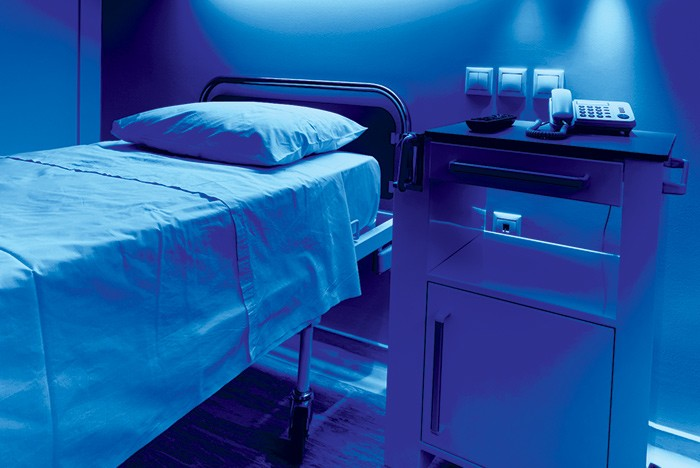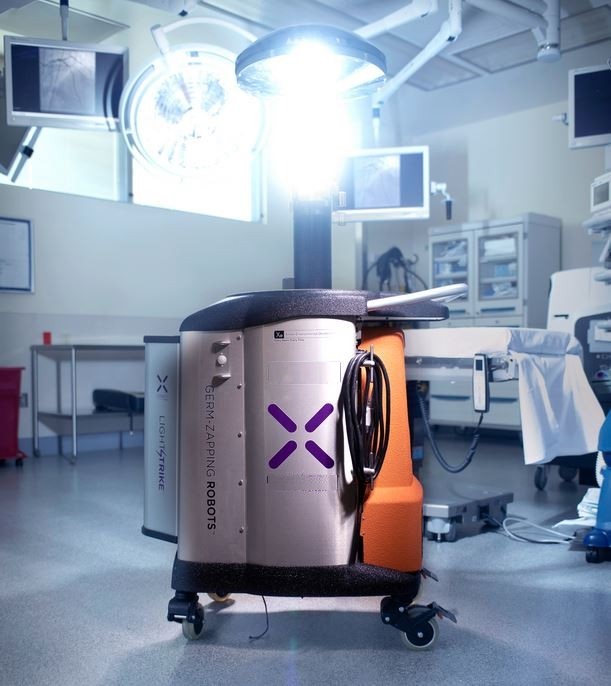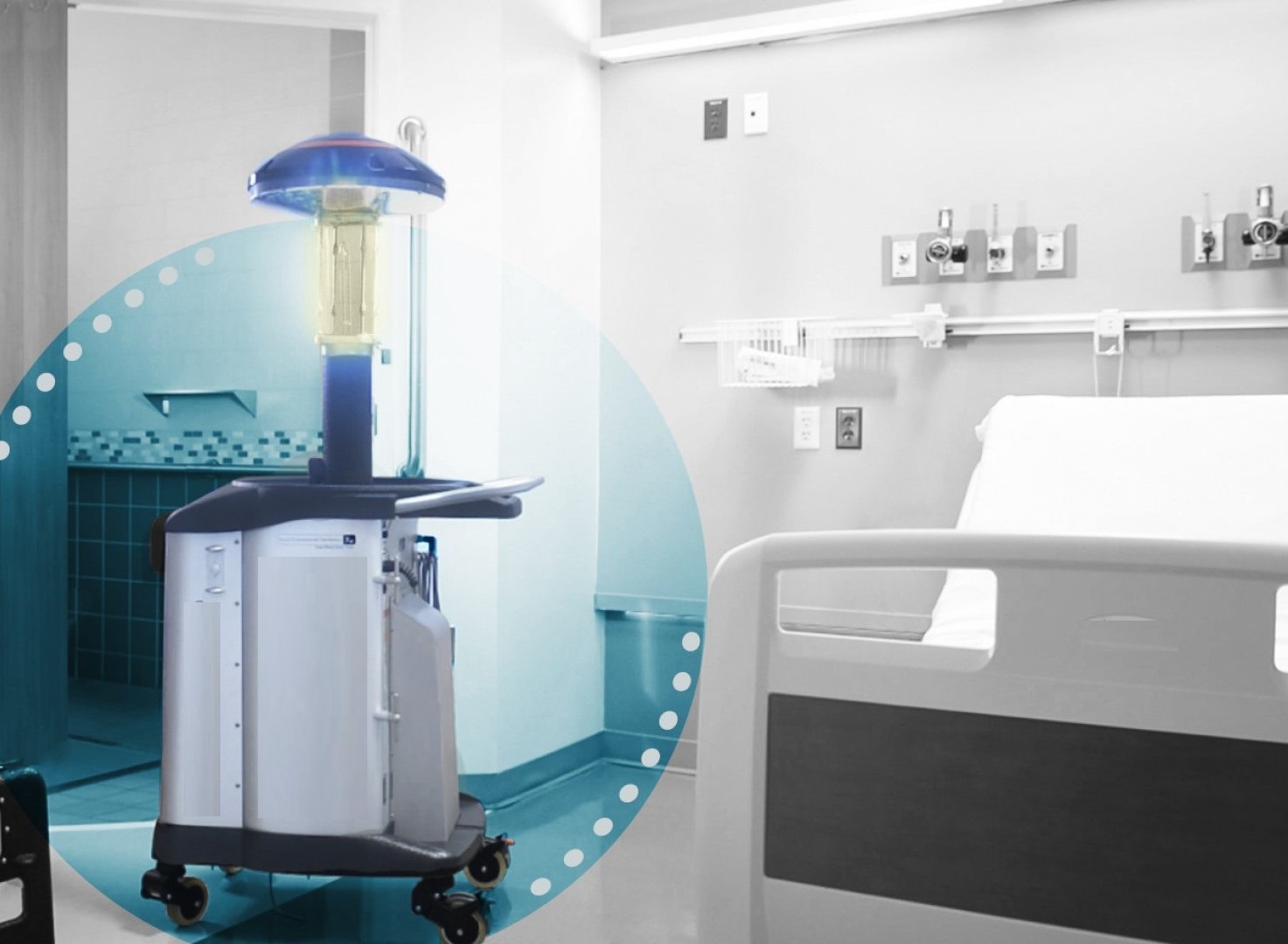UV Light Disinfection
Experience the power of germicidal UV irradiation for healthcare facilities.
Our ultraviolet light disinfection services utilize the latest technology to reduce pathogens, bacteria, and viruses. Purifying through light!
UV irradiation has been a validated technology for the decontamination of surfaces, as well as air and water, for several decades. UV light covers a wavelength spectrum from 100 to 380 nm and is subdivided into three regions by wavelength: UV-A (320 to 400 nm), UV-B (280 to 320 nm), and UV-C (200 to 280 nm). Among these wavelength ranges, UV-C has been shown to possess the highest efficacy in terms of microbial inactivation. This is due to the fact that the wavelength of 250–270nm, is strongly and mainly absorbed by the nucleic acids of microbial cells leading to the inactivation of microorganisms.
This is because the intercellular components of microbes (e.g., RNA, DNA, and proteins) can sensitively absorb UV-C photons. Absorbed UV-C photons cause critical damage to the genomic system of microorganisms (nucleic acid and microorganismal proteins), preventing them from replicating and surviving, where the adenine–thymine bond is collapsed and a covalent linkage, pyrimidine dimer, is generated between two adenines leading to inability of the cell to replicate.
Therefore, the effect of UV irradiation on microorganisms is called “inactivation” and not “killing”.
What are the most commonly used UV-C light sources?
Numerous trials and studies have shown the significance of UV-C germicidal lamps in reducing the number of viable pathogenic microorganisms including methicillin-resistant Staphylococcus aureus, Vancomycin Resistant Enterococci, Clostridium difficile, Influenza viruses, Coronaviruses, and many others.
UV Light Disinfection
Germicidal UV Irradiation




